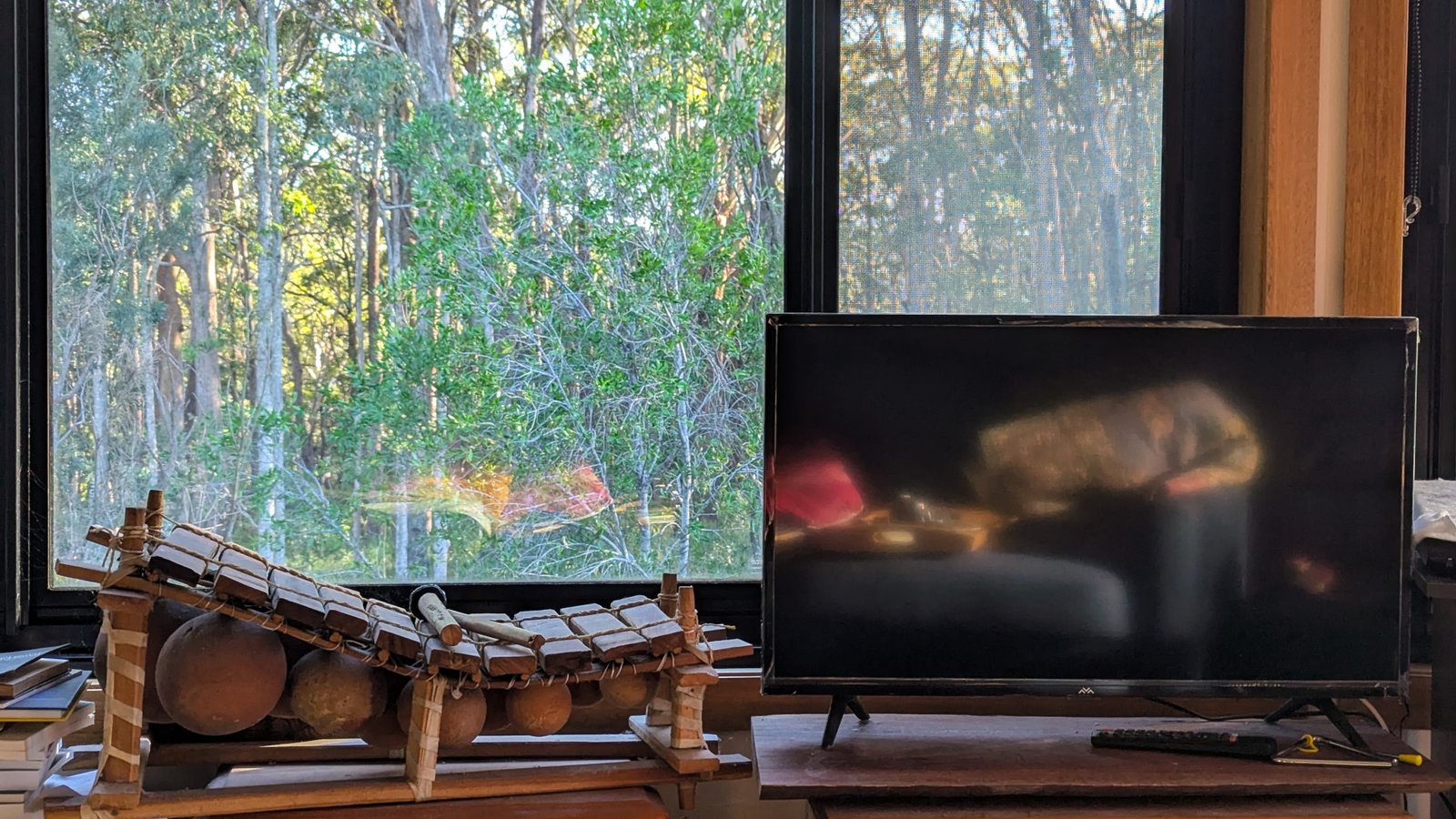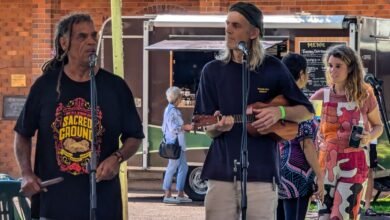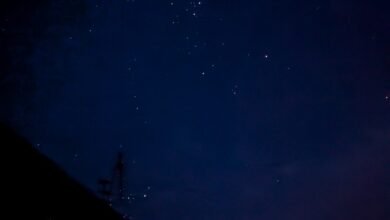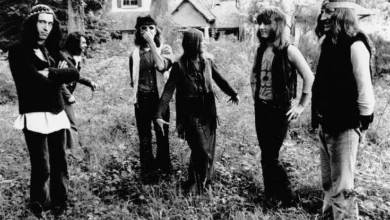I turn the radio on. The presenter is about to interview someone from a humanitarian aid group talking about starvation in Gaza. With a small twist (hardly any effort involved), I turn the dial to classical music. Pathetic, but I feel I’ve had enough. It’s been going on for so long, with nothing underway to end the suffering. If I’m exhausted, what about the poor bastards actually trying to survive in this other world? How much suffering on a scale of 1 to 100,000? My donations every few months are clearly a drop in the ocean/reservoir/river. I anticipate a poverty of remembrance, and a haunting.
I recognise the music but can’t place it, sounds modern, pleasant. The announcer reveals it’s the theme to Downton Abbey, by a composer I’ve never heard of. We watched the first season years ago, enjoying Maggie Smith as the acerbic, witty Dowager.
An hour ago, I discovered Egberto Gismonti’s ‘Dança das Cabeças’, thanks to a YouTube algorithm. A fantastic sonic, Brazilian world from 77. Music shines through my life.
I turn it off and move round to the side where the sun’s coming in. It’s cold. A couple of hours ago I was outside photographing the stars on a moonless night that looked youthful, unable to count, or feel my toes. Wondering where all the satellites lived with the promise of contemporary surveillance and communications.
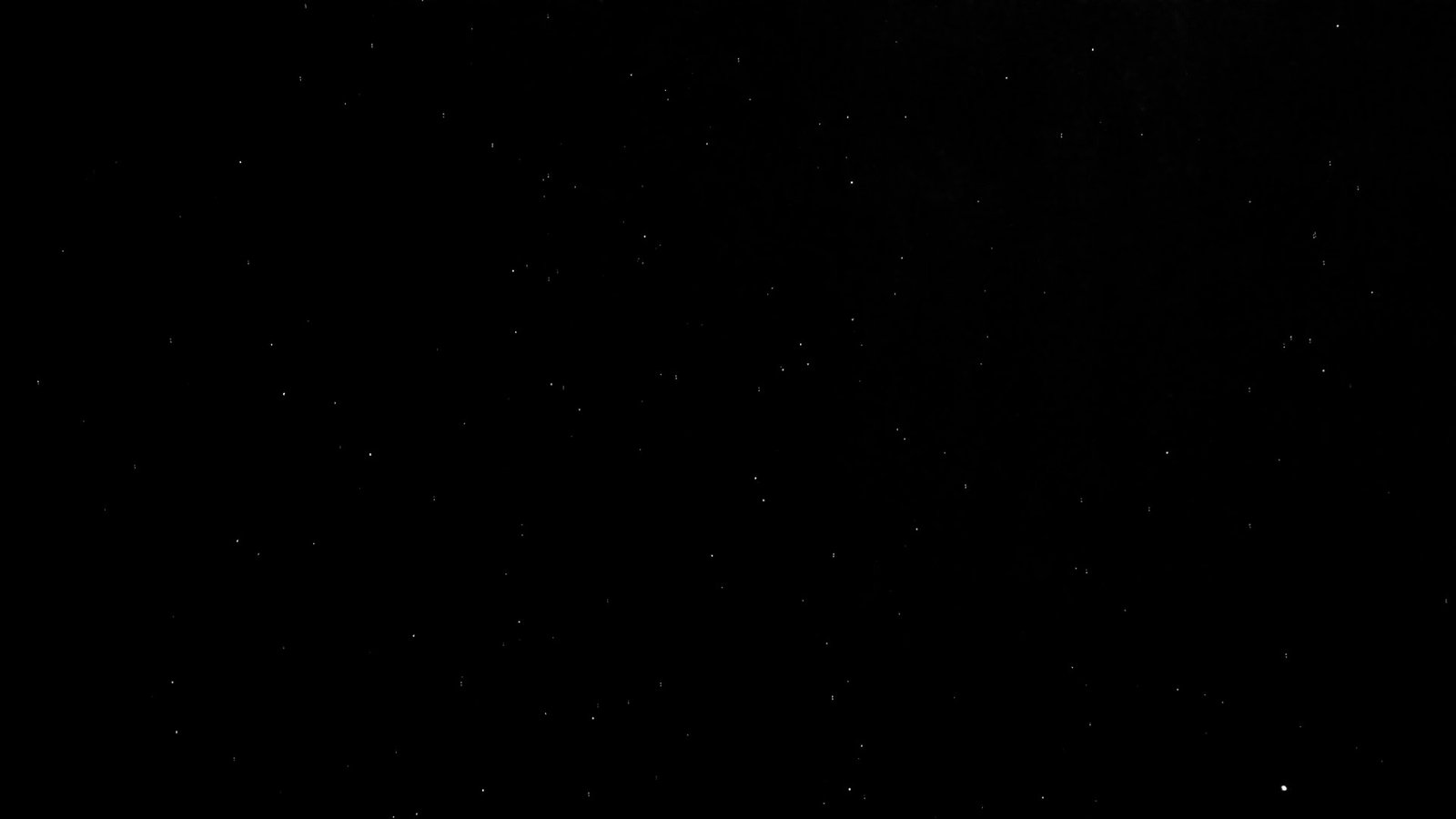
Now I’m on the sofa reading a novel, voracious as a teenager, it’s now a rare event. Maybe one a year, usually when I’m feeling ill. At first light, I worked on the script for my next video-poem, interference. I look out at the forest, light wanders from branch to branch. The sign announcing you are about to enter our Nature Reserve, a sacred place with certain acts outlawed, hides behind the small, silver Geebung tree. An unexplained death. Wyn and I know we are blessed to live here, alive.
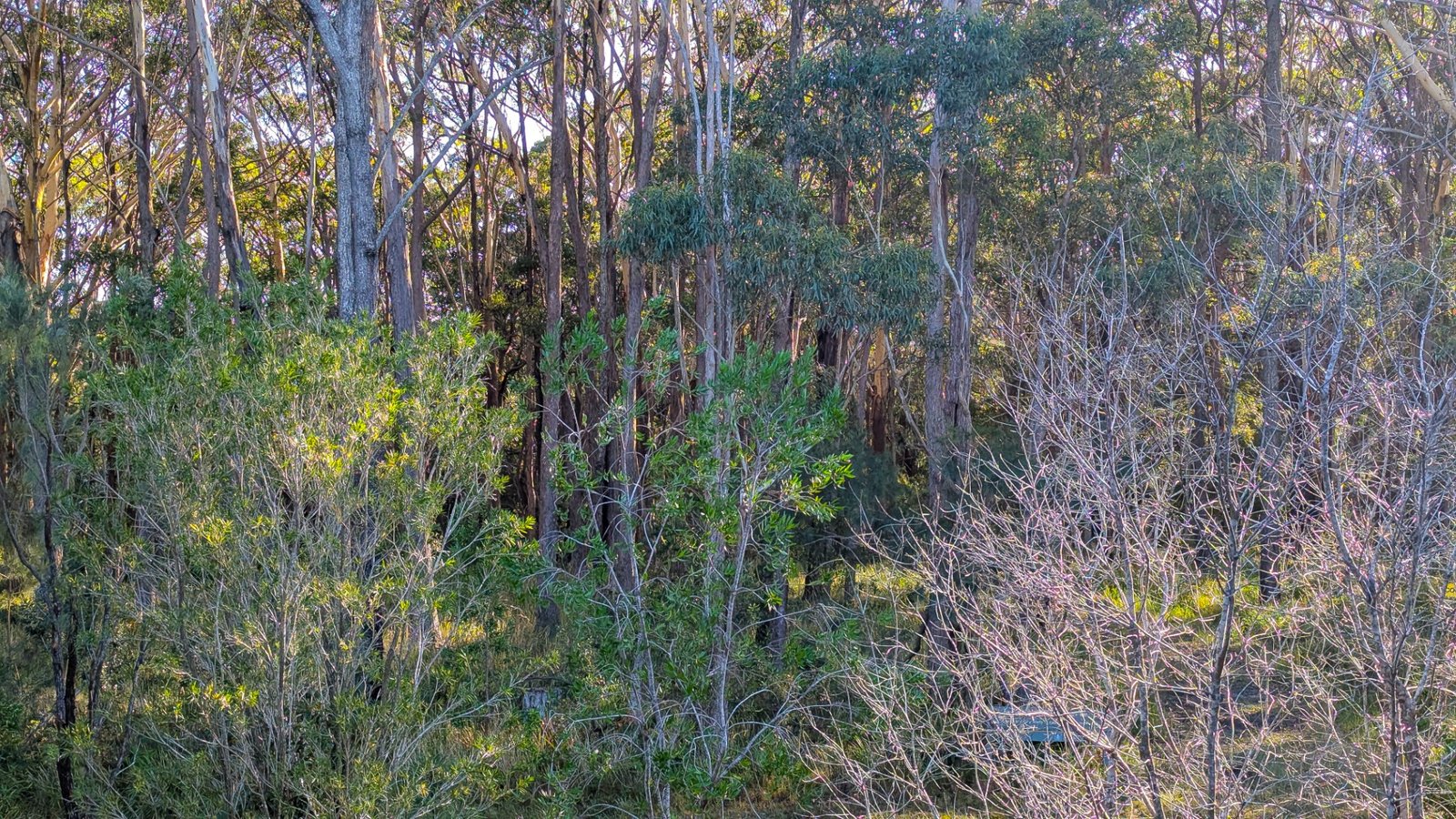
I notice the television; one we have for occasional guests. I start watching the television turned off and take a photograph of the machine and, for compositional purposes, our Xylophone. I like to make sounds.
It is 20 years old and needs tuning. We put in a new bathroom in Sydney, so tried to buy a washhouse for an African village online through Oxfam, but failed. So visited a shop, but the correct card was out of stock. I picked up a beater and hit the hardwood keys. It cost more than a washhouse, but the manager said, it’s on sale. I love a bargain and hearing the sound, I bought the thing and lugged it back on the bus.
I play a little most days. Improvise then throw away the music, like the baskets of the desert fathers. It’s a Doozie from Ghana, a gyil (pronounced approximately Jee-Lee). [i] The bars are usually Legaa wood, one of the few hardwoods in the area, with calabash gourds as resonators. Usually a solo instrument with bass ostinato in the left hand and alto melody. Its scale is pentatonic though West Africans use no fixed pitch.
This instrument is used as a medium of communication, to gather the community, to inform, to give advice in difficult social situations, when the spoken word would have been considered disrespectful, and finally to entertain the public. This instrument is considered sacred, and played during rituals, funerals and other large gatherings. The knowledge of its making, also sacred by extension, has been passed from father to son by way of imitation.
There are so many photographs just waiting to be taken. How many poems are waiting to be written? I think I have given up on the book. I go back round to recreate turning the dial away from distress. As if this could be art, and could have something so say about our condition of helplessness. As if I could document a poem with photographs.
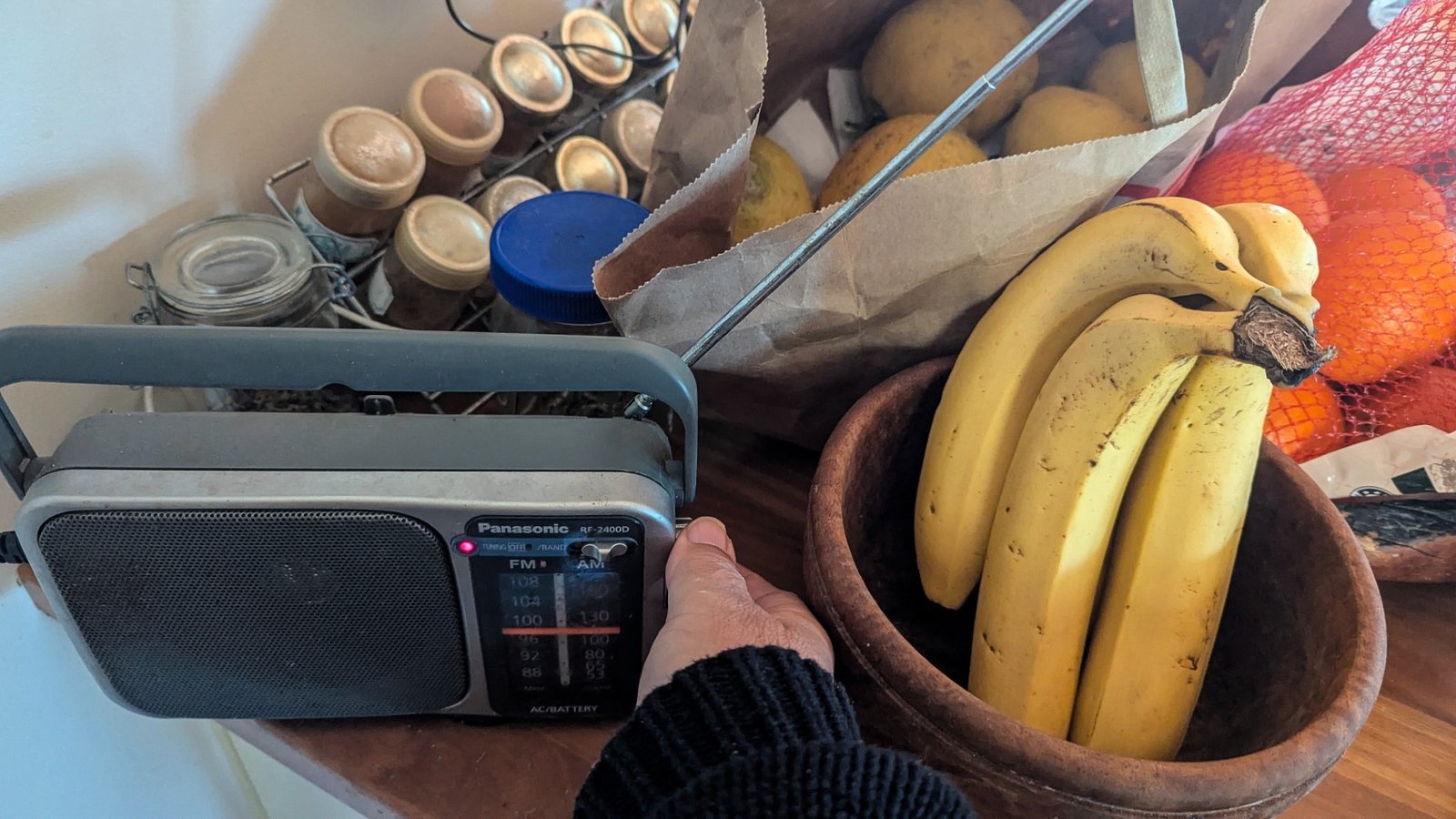
In the evening – The Listening Session. A concert of joyous, beautiful improvisations. Organised by my good friend SJ, at the Mem Hall, Bellingen. I feel crap (the return of Ross Rover Fever) but that doesn’t matter. I am engulfed in so many moments over 1 and 3/4 hrs by four extremely wonderful musicians:
Linsey Pollak is a musician, inventive wind instrument maker, composer, and community music facilitator.
Shenzo Gregorio is an Australian violinist/violist/guitarist has been exploring cross-genre improvisation for a long time
Tunji Beier is a master drummer, has studied Yoruba drumming and South Indian percussion (and an actor).
Greg Sheehan is a local, and a leading figure in teh world of Australian percussion. He played several wild cards towards the end with humour, toys and plastic bags.
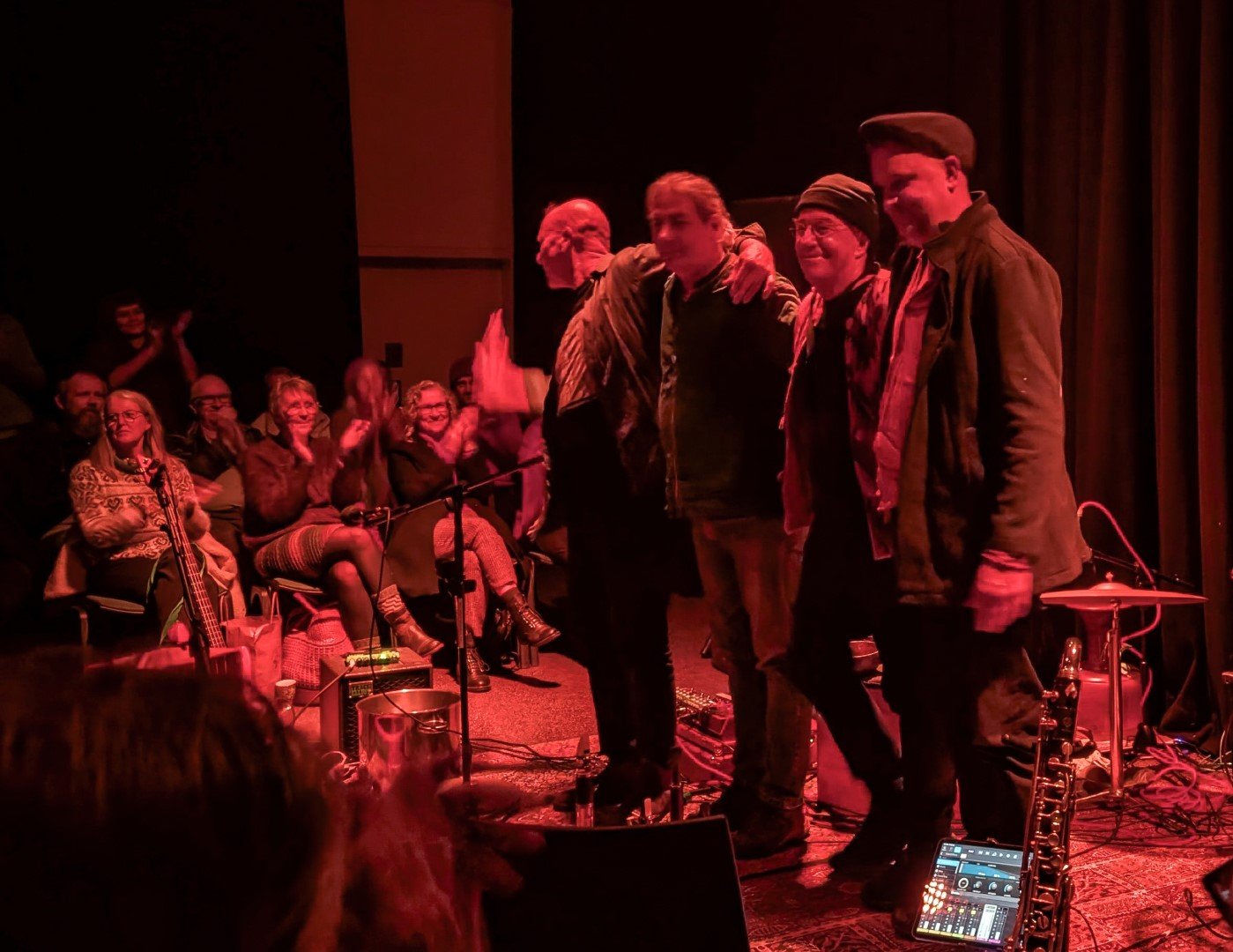
Here are ‘GOSTI’ with two of the four musicians, to give you some idea: featuring Tunji Beier (kanjira), Linsey Pollak (clarini) and Philip Griffin (oud). Playing ‘Device Tree’ composed by Linsey Pollak and arranged by ‘Gosti’
[i] Christopher Doozie, the xylophonmaker, player and teacher: Hailing from Jirapa in the Upper West Region of Ghana, Christopher developed interest in playing xylophone already at the age of 6.
